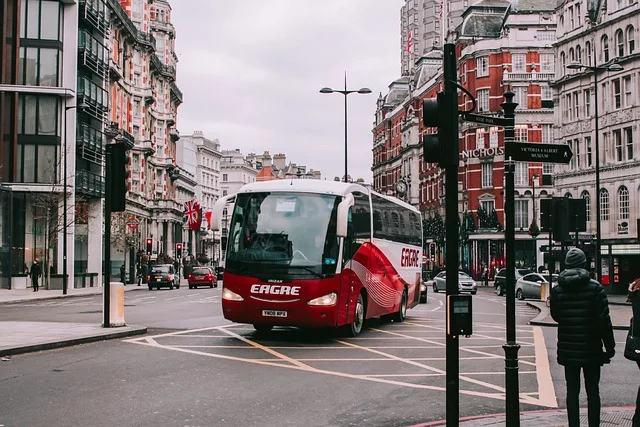London cities: London is the capital city of England and the United Kingdom. It is one of the largest cities in Europe, with a population of over 8 million people. It is a cultural, financial, and political center, and is known for its history, landmarks, and vibrant atmosphere. Some of the most famous attractions in London include Buckingham Palace, the Tower of London, Big Ben (now officially known as the Elizabeth Tower), the London Eye, and the British Museum.
The city is also home to many world-renowned institutions such as the London Stock Exchange, the Royal Opera House, and the West End, which is known for its theater scene. London has a rich cultural mix, and its diverse communities have contributed to its thriving food scene, fashion industry, and music scene. There are many different neighborhoods in London, each with its own unique character and charm, making it a fascinating city to explore and live in.
It’s worth noting that some of these boroughs contain multiple towns and neighborhoods within them, each with its own unique character and history.
Barking and Dagenham
Barking and Dagenham is a London Borough located in the northeast of the city. It was formed in 1965 as part of the Greater London area and covers an area of around 15 square miles. The borough is home to a population of around 187,000 people.
Barking and Dagenham have a rich history, with evidence of human settlement in the area dating back to the Iron Age. During the 20th century, the area underwent significant development, including the building of large housing estates and the growth of the heavy industry. Today, the borough is undergoing a period of regeneration, with a focus on improving the quality of life for residents and creating new employment opportunities.
Barking and Dagenham is known for its vibrant community spirit and a strong sense of local pride. The borough is home to a number of green spaces and parks, including Central Park and Barking Park, as well as a variety of shops, restaurants, and cultural attractions. There are also several excellent transport links, including the District Line of the London Underground and several main roads, making it easy to get around the borough and the rest of the city.
Barnet
Barnet is a London Borough located in the northern part of the city. It was formed in 1965 as part of the Greater London area and covers an area of around 33 square miles. The borough is home to a population of around 375,000 people.
Barnet has a long and rich history, with evidence of human settlement in the area dating back to the Iron Age. During the Middle Ages, the area was known for its market towns and country estates, and many of these historical landmarks still remain today. During the 20th century, the borough underwent significant development, including the construction of suburban housing and the growth of the retail sector.
Barnet is known for its diverse communities, with a mix of residential, commercial, and green spaces. The borough is home to a number of parks and open spaces, including Hampstead Heath and Queen’s Park, as well as several shopping centers, cultural attractions, and sporting facilities. There are also excellent transport links, including the Northern Line of the London Underground and several main roads, making it easy to get around the borough and the rest of the city.
Overall, Barnet is a vibrant and diverse borough with a rich history and a strong sense of community. It is a great place to live, work, and visit.
Bexley
Bexley is a London Borough located in the southeast of the city. It was formed in 1965 as part of the Greater London area and covers an area of around 14 square miles. The borough is home to a population of around 239,000 people.
Bexley has a rich history, with evidence of human settlement in the area dating back to the Roman period. During the Middle Ages, the area was known for its agricultural and market town, and many of these historical landmarks still remain today. During the 20th century, the borough underwent significant development, including the construction of suburban housing and the growth of the retail sector.
Bexley is known for its attractive suburbs, spacious parks, and excellent transport links. The borough is home to several green spaces, including Danson Park and Foots Cray Meadows, as well as several cultural attractions, including the Hall Place and Gardens and the Bexley Heritage Trust Museum. There are also several excellent transport links, including the Bexleyheath Line of the London Overground and several main roads, making it easy to get around the borough and the rest of the city.
Overall, Bexley is a charming and well-connected borough with a rich history and a strong sense of community. It is a great place to live, work, and visit.
Bromley
Bromley is a London Borough located in the southeast of the city. It was formed in 1965 as part of the Greater London area and covers an area of around 33 square miles. The borough is home to a population of around 320,000 people.
Bromley has a rich history, with evidence of human settlement in the area dating back to the Roman period. During the Middle Ages, the area was known for its market town and agricultural land, and many of these historical landmarks still remain today. During the 20th century, the borough underwent significant development, including the construction of suburban housing and the growth of the retail sector.
Bromley is known for its attractive suburbs, spacious parks, and excellent transport links. The borough is home to several green spaces, including Beckenham Place Park and Bromley Common, as well as several cultural attractions, including the Churchill Theatre and the Bromley Museum. There are also several excellent transport links, including the Bakerloo Line of the London Underground and several main roads, making it easy to get around the borough and the rest of the city.
Overall, Bromley is a charming and well-connected borough with a rich history and a strong sense of community. It is a great place to live, work, and visit.
Camden
Camden is a London Borough located in the north of the city. It was formed in 1965 as part of the Greater London area and covers an area of around 8 square miles. The borough is home to a population of around 250,000 people.
Camden has a rich history and is known for its diverse and vibrant culture. During the 19th century, the area was a hub of the industrial revolution and was home to many of the city’s major industries. In the late 20th century, Camden became famous for its music scene, with legendary venues like the Roundhouse and the Jazz Café attracting some of the biggest names in rock, pop, and jazz.
Today, Camden is a thriving and eclectic borough, with a rich cultural heritage and a thriving arts scene. The borough is home to a number of popular tourist attractions, including Camden Market, the British Museum, and the London Zoo. It is also known for its vibrant nightlife, with a wide range of bars, clubs, and restaurants to choose from.








